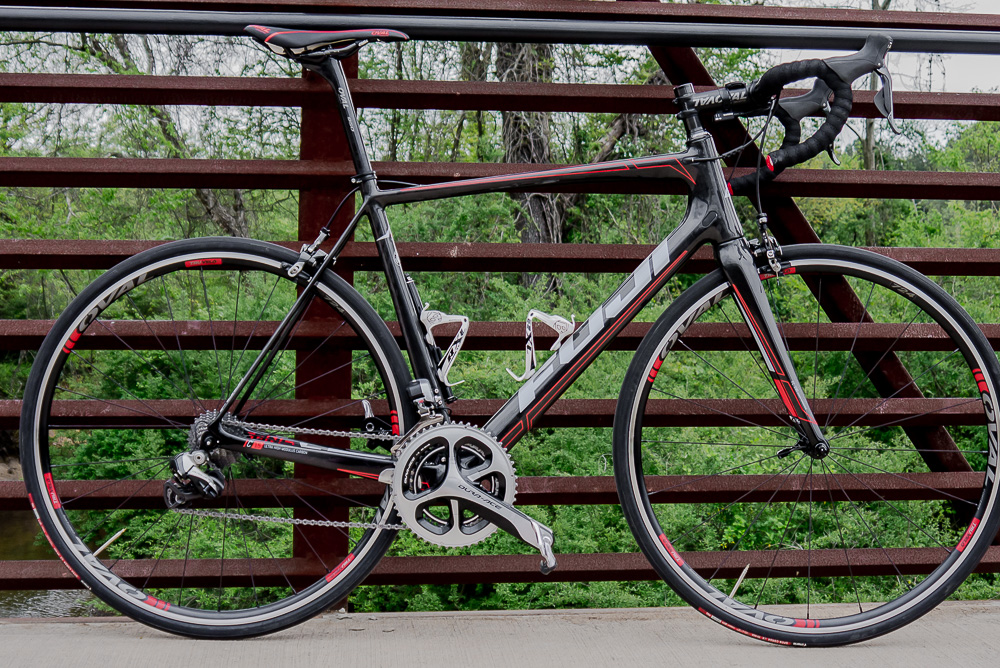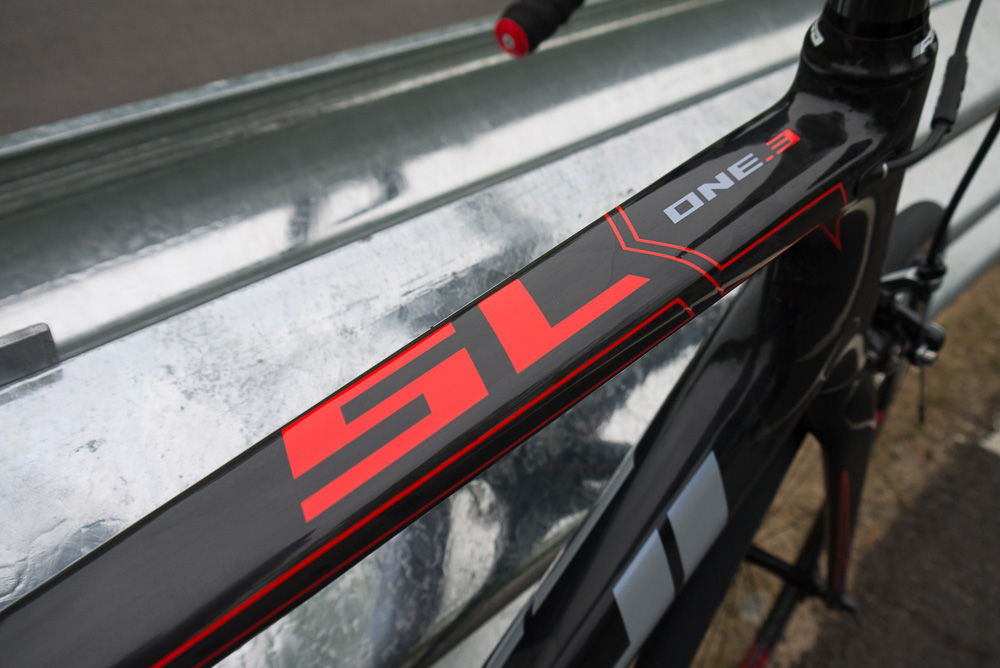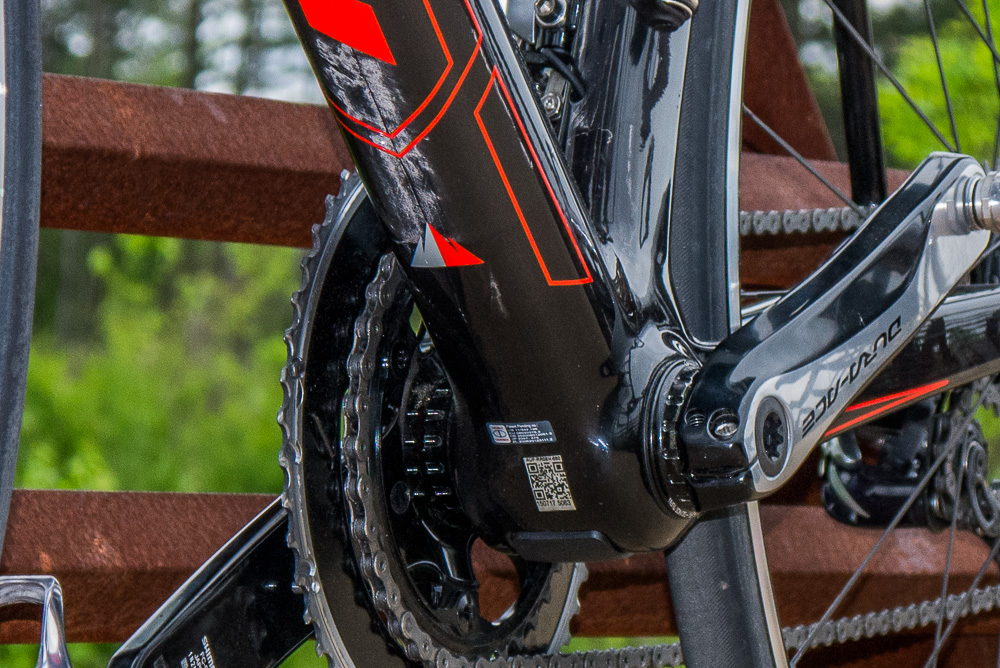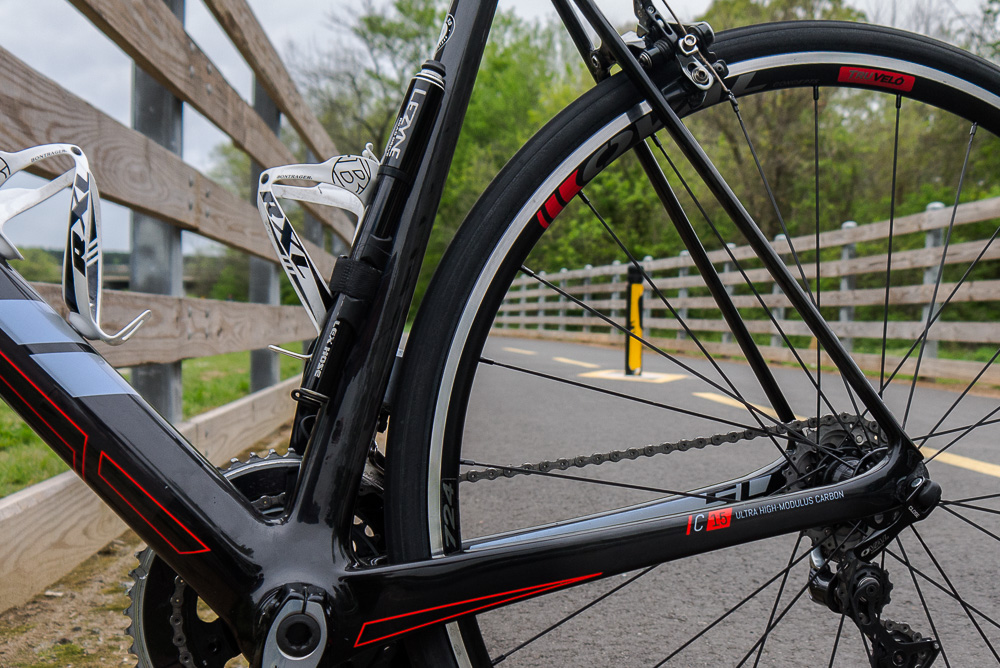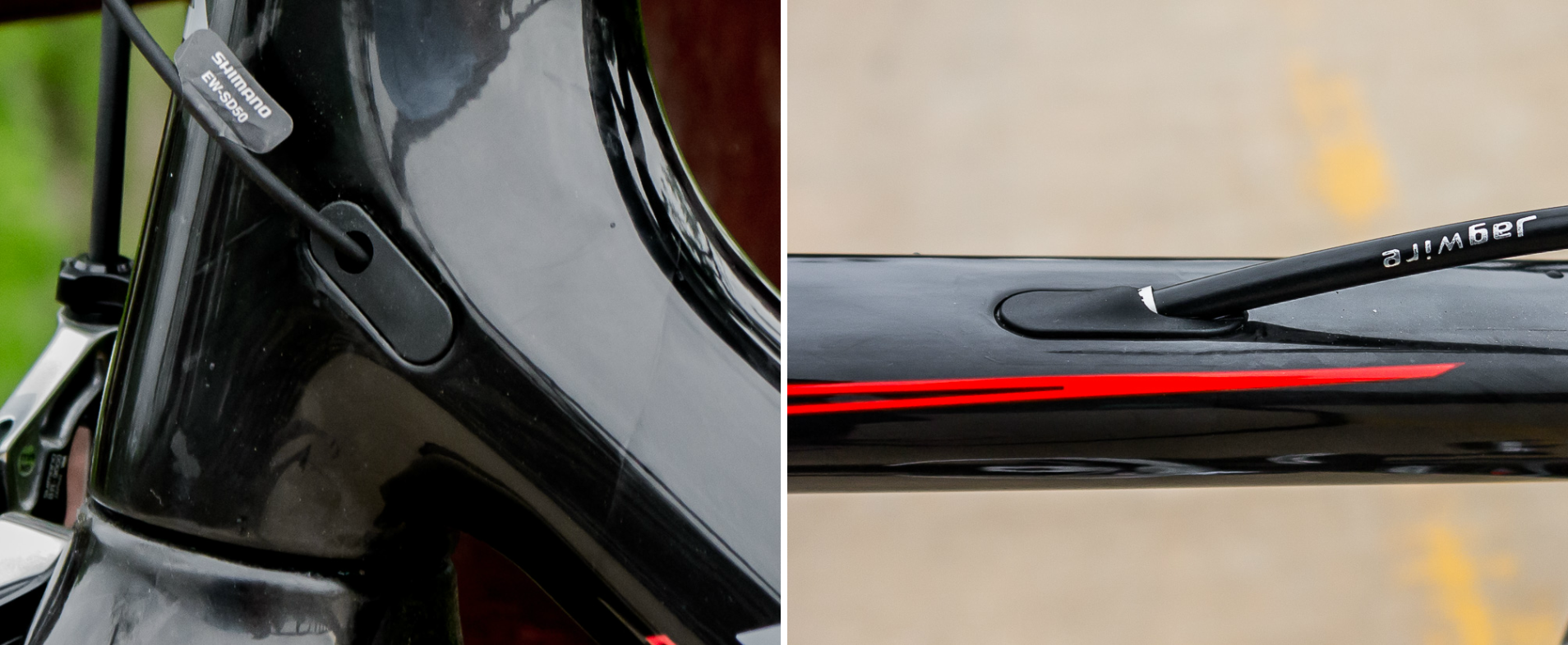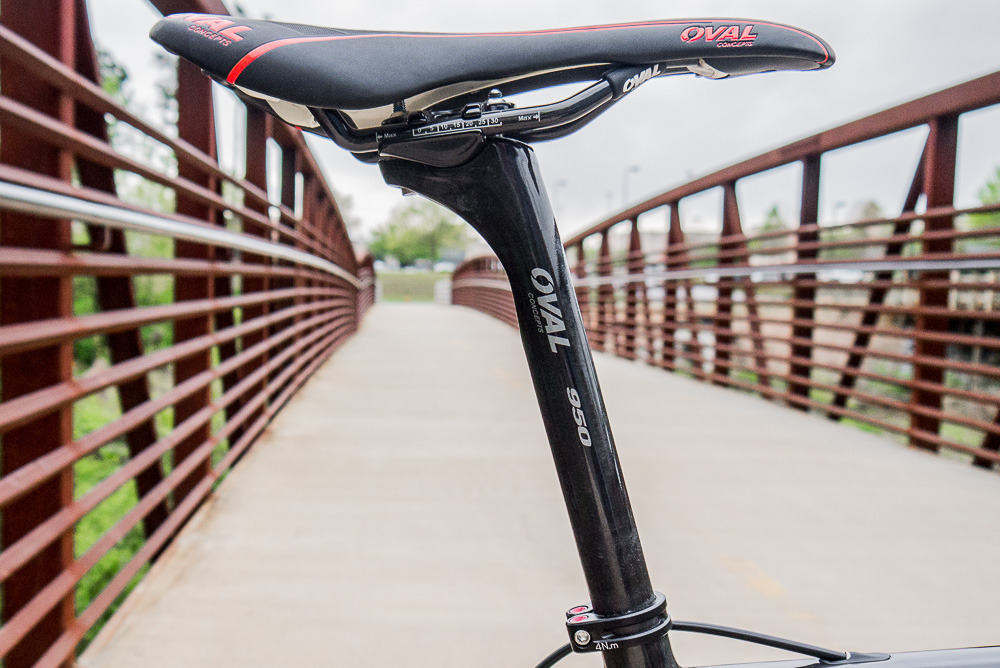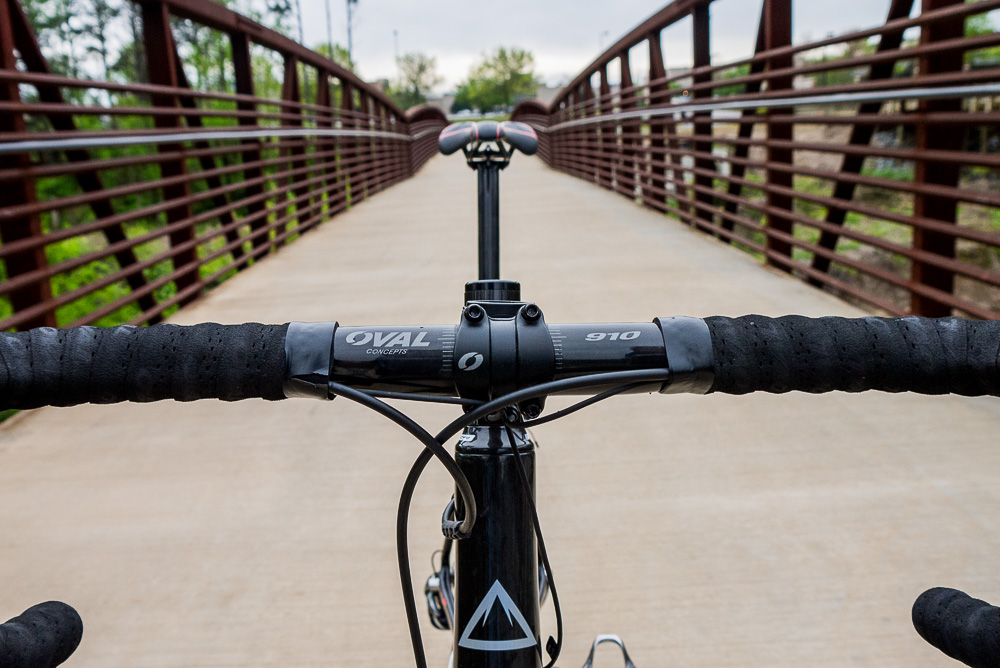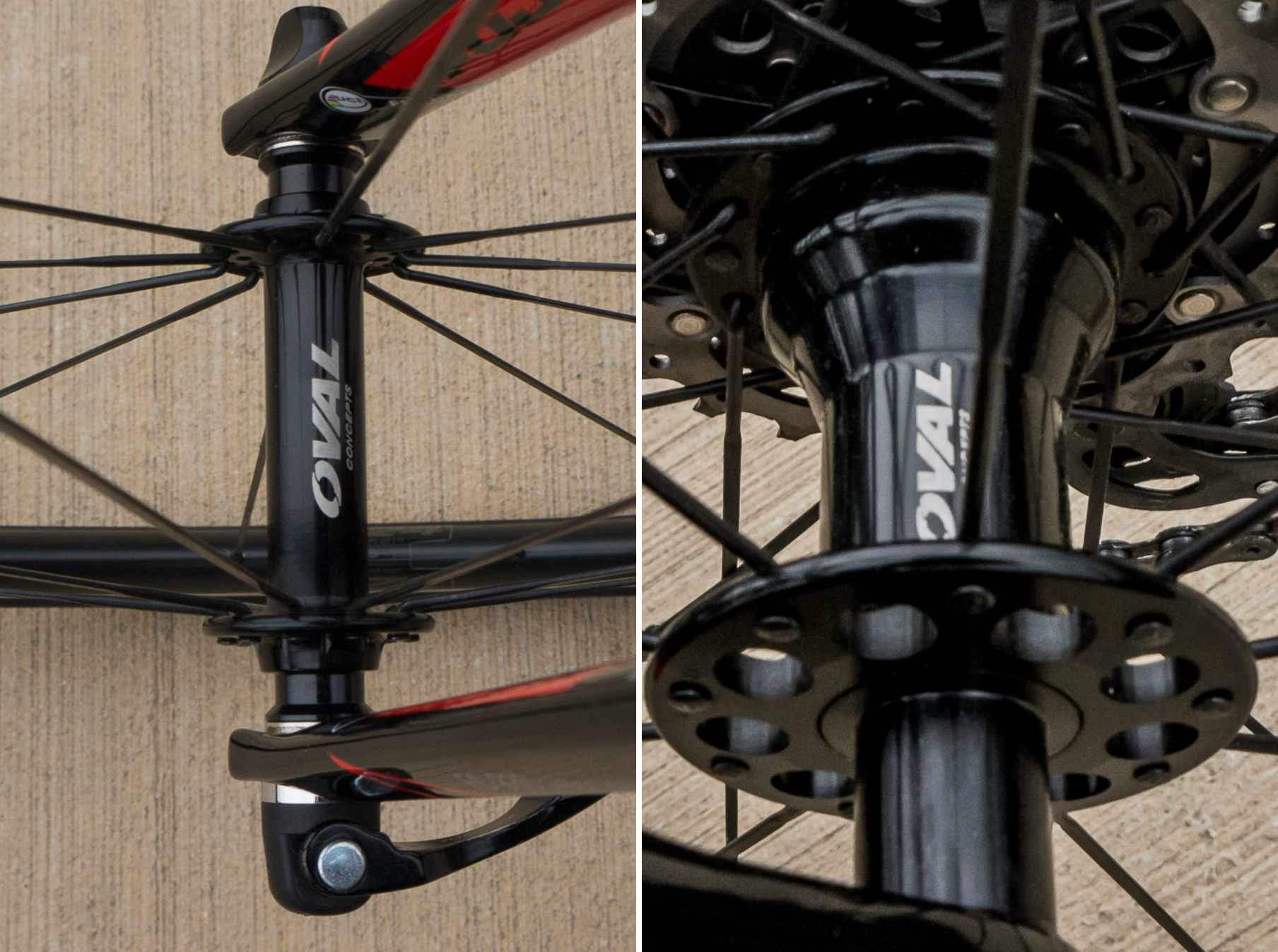It isn’t often that I pick up a bike and am almost afraid to ride it. Fuji’s 14.17lb/6.44kg SL 1.3 was a bike I’d been wanting to try since it was first announced back in August. Taking into consideration that a bike this light is bound to spend time on the hills. Even with the 695 gram frame being a climber’s dream, the SL 1.3 is made for pure performance on the road, regardless of rider or terrain.
Check out all of the reasons I think this bike should be on someone’s top five list of this season’s race machines…
Though not Fuji’s uber expensive 10.9 pound SL 1.1 flagship, when un-boxing the SL 1.3 and lifting it out of the box, I sort of shook my head with a grin. It was reminiscent of the time I first lifted my 1995 Merckx Titanium EX (by Litespeed) out of the box, and feeling how light that was. After thinking back about it, I’d bet this frame only weighs about half of what that dusty one hanging up just 10 feet away does.
OK, so I just looked up the specs, and it turns out this Fuji SL frame is actually 1/3 the weight! *jaw drops*
Looking at the frame’s underside, the downtube gets about as wide as it can to house the PF30 assembly. The downtube has an octagonal shape to it to decrease the “twisting” flex it receives when the headtube and BB are getting torqued in opposite directions when sprinting. This does provide for a laterally stiff ride but sometimes can be too much, contributing to a harsh ride. This was not the case at all with the SL.
To get a better view of the clear over carbon I used a flash on this overcast day to bring out the marbled carbon fibers. There is no paint on this bike other than the clear-coat that holds the decals on and keeps UV at bay. Looks stunning in the sun and though some may prefer more color on their bikes, I dig the simple look of raw carbon (well, and titanium too).
When you want to switch muscle groups to mash up a hill, or it’s 200 meters from the line and time to light it up, lateral stiffness is important. Looking at the frame’s posterior, you see the boxed chainstays that flow right off the BB to create what should be a sturdy platform; however, there is still such a thing as overly laterally stiff. During a sprint, even the best sprinters sway the bike and turn the wheel during the violent effort to make it to the line. If there was no give in the frame, it would increase the chances of rear wheel “hop” causing a loss of traction/acceleration at times… or worse. Often referred to as having the right amount of “whip”, just the right amount of flex creates a sort of well-timed “spring” during these intense efforts. Even with my 6’1″ 190lb stature, this bike pretty much rocked everything I threw at it with confidence, without bouncing down the road.
So how did it ride? Again, I can’t express enough that the weight of this bike was almost intimidating. Part of me felt like I should handle this thing like a piece of fine china during the first 10 minutes of each ride heading out of my hill-laden neighborhood. (I can do a repeating loop and end up with 1000 feet of climbing in just 5 miles.) In no time, I realized there was no need for concern.
The ride itself turned out to be fantastic for a race bike. Much like the modern trends in road bikes promise, the thin seatstays have a flat profile allowing them to absorb some of the directional shock that gets driven to the saddle while creating that “balance” for transferring power when it’s time to put the power down. So where does all of this unbelievable balance of (extreme) light weight, stiffness, and ride quality come from exactly? The Fuji SL’s frame is made up of just three pieces bonded together using their C15 “Ultra High Modulus” carbon.
As strong and light as the high modulus carbon is, it’s Fuji’s High Compaction process that takes it to another level. By inserting bladders into every tube, including the seatube and even those itty-bitty seatstays, Fuji can apply an enormous amount of pressure to the tubing during the molding process. This eliminates any excess resin, squeezes out air bubbles, makes the tubes of the walls stronger, and gives the interior of the frame a finish as smooth as the outside. According to Road Project Manager, Steven Fairchild, this process reduces the SL’s weight by 19% over the Altamira while increasing BB stiffness by 11% and headtube stiffness by 9%.
The straight bladed fork also receives the High Compaction treatment, but also contains an internal “rib” that helps increase stiffness by 19% over the previous generation Altamira’s. Though not the only ones now, Fuji were one of the first manufacturers that chose to incorporate different fork off-sets depending on the size of the bike, to try and give bikes the best possible handling and stability, no matter the size.
If you’re going to create a flagship bike the details of the fit and finish matter, and Fuji did not fall short. Rather than just use some generic method for cable stops, they made their own injected molded stops that take the cake. Flush and mounted with a solid interface, it looks good, and they are rattle free.
The Oval carbon 27.2 post houses the Di2 battery and provides a little additional shock absorption. Saddle angle and fore & aft positioning are very easy to adjust with the 2-bolt head. It complimented the rest of the frame’s characteristics well, though I did have a couple of initial issues related to the seatpost regarding the Di2 battery. Perplexed at first, I discovered the Di2 wire in the seattube had been caught on a waterbottle cage bolt, preventing me from pulling it out to connect to the battery. (Don’t ask how long it took me to try loosening the cage bolt). Another issue was some of the carbon assembly gel (a gritty grease like gel made for keeping carbon pieces from slipping against each other) had gotten into the connectors causing it to come undone once during a ride. After getting UP my driveway, I got it cleaned out and all was good in the world again.
Other details include many components from Oval Concepts, owned by the same parent company as Fuji, which I found to be pretty good. The carbon Oval 910 bar’s compact profile and ergonomics were on the money, though they flexed a little more than I prefer. Some like that so I’ll chalk it up to personal preference. Considering very little corners were cut on the SL 1.3, the $6320 price for a Dura Ace Di2 build on a frame worthy for the peloton is icing on the cake.
Other tidbits included the lightweight seat collar and some pretty decent rubber. I couldn’t be happier to see 25mm tires getting spec’ed on a bike of this level. Though not road-tubeless, these supple Vittoria clinchers did the trick, and demand isn’t yet there enough for it to matter. The wheels stayed true and the hubs stayed smooth. The rear is even drilled out giving it a nice classic look while losing a few grams.
Overall, and I don’t say this without much thought and reason, but the SL 1.3 was one of my favorite road bikes to ever ride. The details put into the frame’s construction give it a strong balance of weight and stiffness without sacrificing ride quality. Though I did find the handling a little on the twitchy side, even for a “race bike”, I settled in just fine once I had learned its personality.
I’ve had the fortunate opportunity to give each of Fuji’s 3 road bike lines a thorough run through. First being the Transonic Aero-road bike last year, then the new Gran Fondo road bike recently in Taiwan, and now the SL. They are three very different road bikes with little overlap in regards to what they’re designed to do. Though I liked all three and thought they did what they were designed to do very well, I have to kind of go with Goldilocks here as far as personal preference goes. The speedy Transonic was a bit too stiff, the “I could ride this for a week non-stop” Gran Fondo was a bit too relaxed, making the SL “Jusssst Right”!
